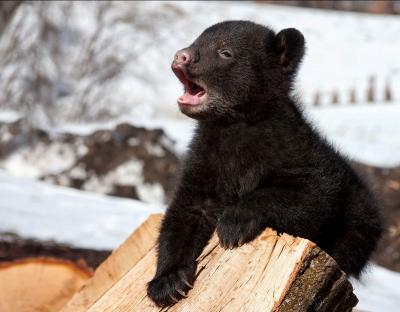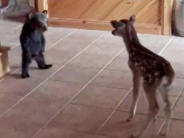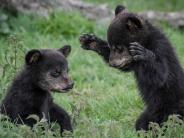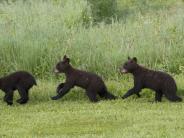What Bears are Doing Now
APRIL AT A GLANCE
- Most bears leave their dens for good.
- Cubs get their first look at their new world.
- Mother bears continue to nurse and keep their den and cubs clean.
- Bears that found human-provided foods last year head straight for these food sources.
Long Winter’s Nap Ends
By the end of April most bears have left their dens for good. The days lengthen, temperatures warm up and spring arrives, bringing with it nutritious spring grasses and budding plants. In areas where snow covered the ground, the spring melt often reveals the carcasses of animals that died over the winter as well as the last fruits, nuts and berries of fall, all good food for hungry bears. One bear in California was observed following its nose for more than three miles directly to the carcass of a winter-killed deer.
Wake Up and Smell the Ants
After acclimating to the world, bears start feeding on early spring greenery as well as any insects they can find, including ants, bees and termites.
Fun fact: Ant colonies give off formic acid and have a distinct odor (to a bear). So does insulation made with formaldehyde. That often includes hot tub covers, bicycle seats and many insulated materials made of vinyl. A bear poking around your hot tub may think it’s discovered a gigantic ant hill.
Cubs Get a Look at Their World
Mothers with cubs born earlier this year are the last bears to emerge from their dens. By eight to ten weeks old, healthy black bear cubs have grown from the size of a stick of butter at birth to four to eight pounds. The baby-fine hair they were born with is turning into a protective fur coat.
Black bear cubs still spend a lot of time nursing on their mom’s high-fat, extra-nutritious milk. Nursing cubs often sound as if they are purring. (view 12-second video of a nursing cub). In April, cubs become much more active. Cubs born in ground dens may hang around the entrance watching the world and playing with each other. Mother bears continue to keep the youngsters and the den clean.






